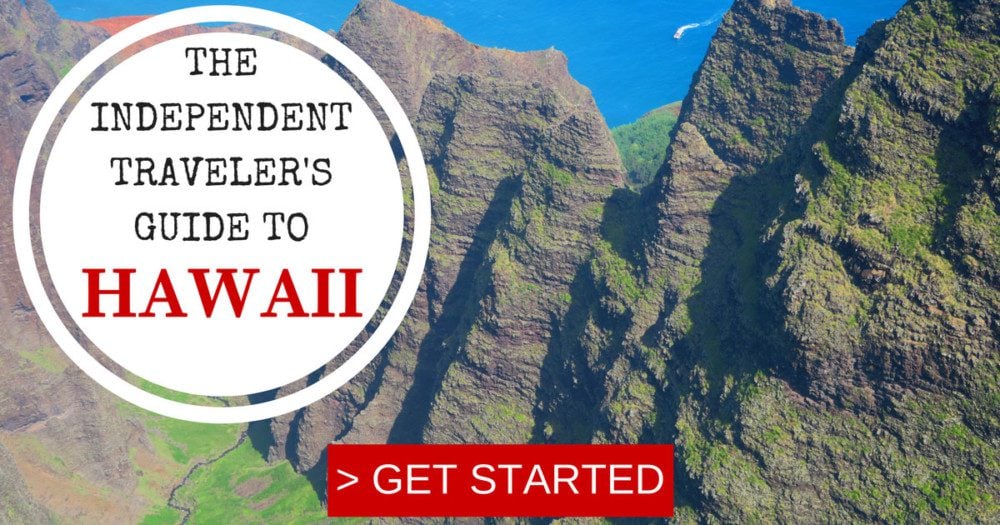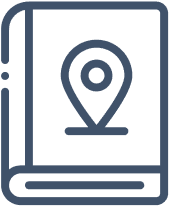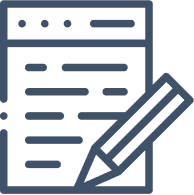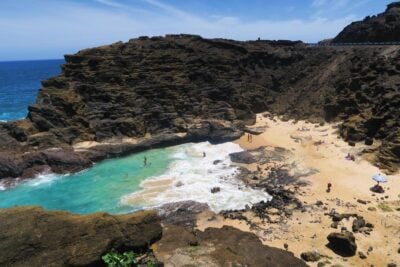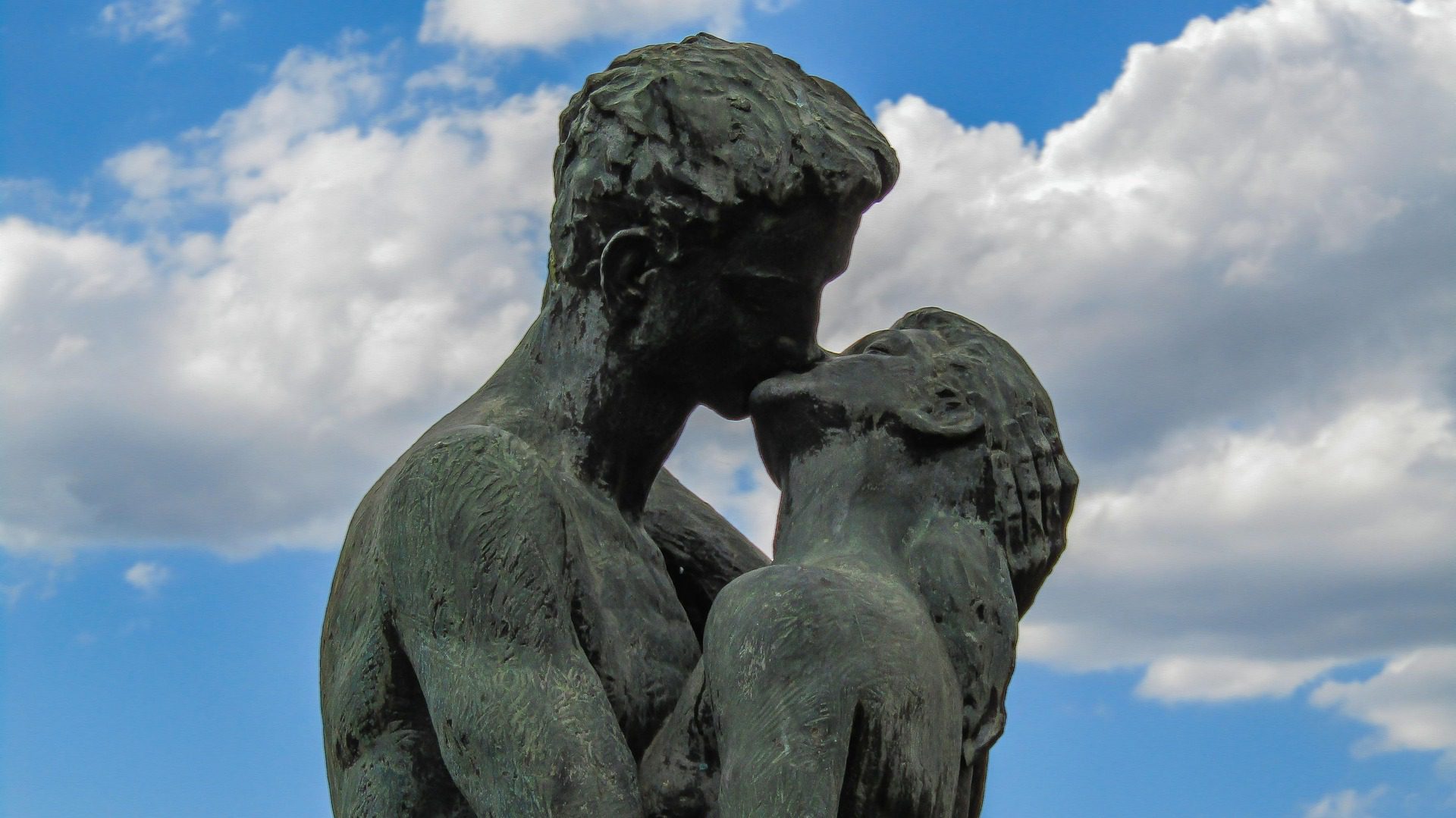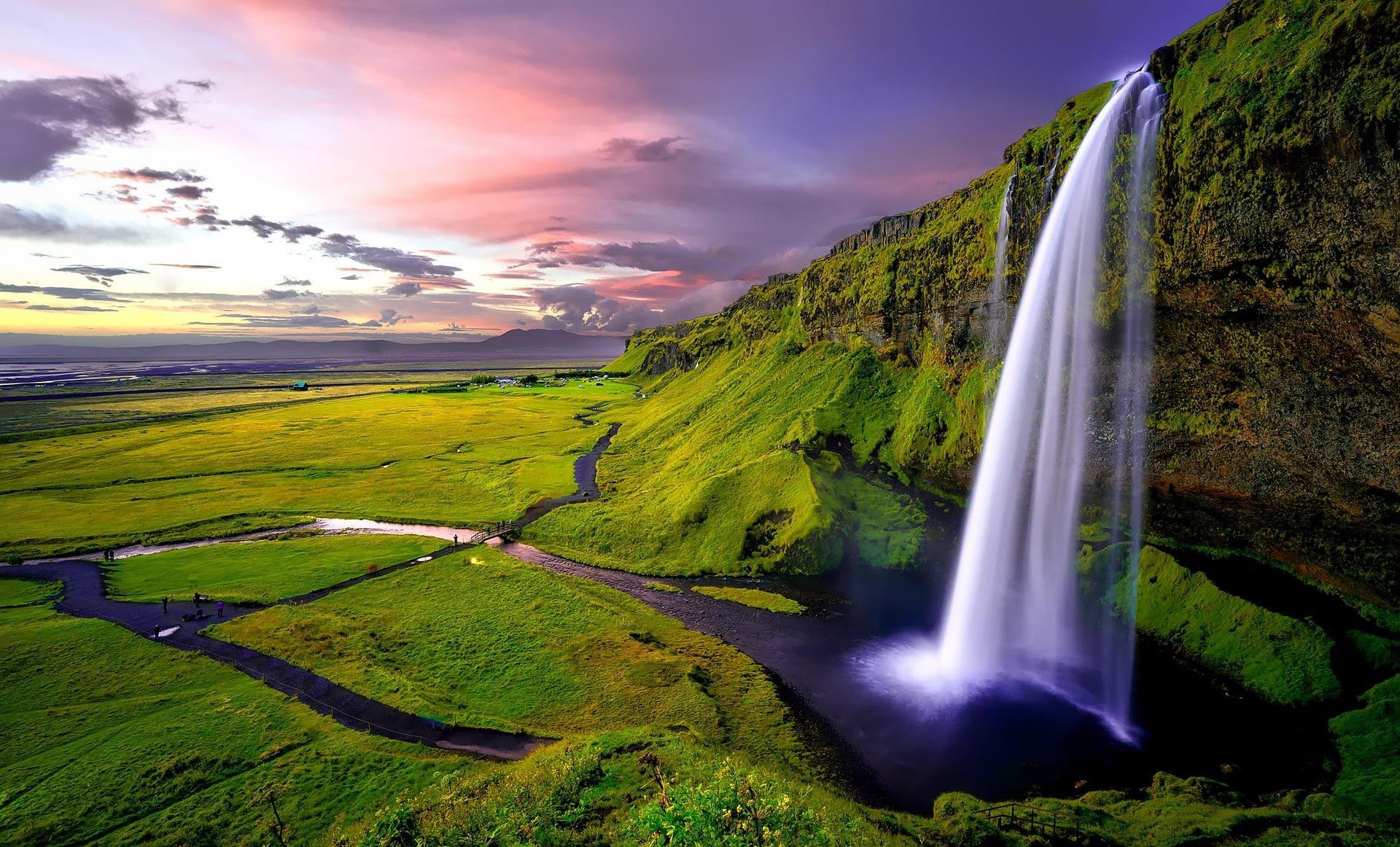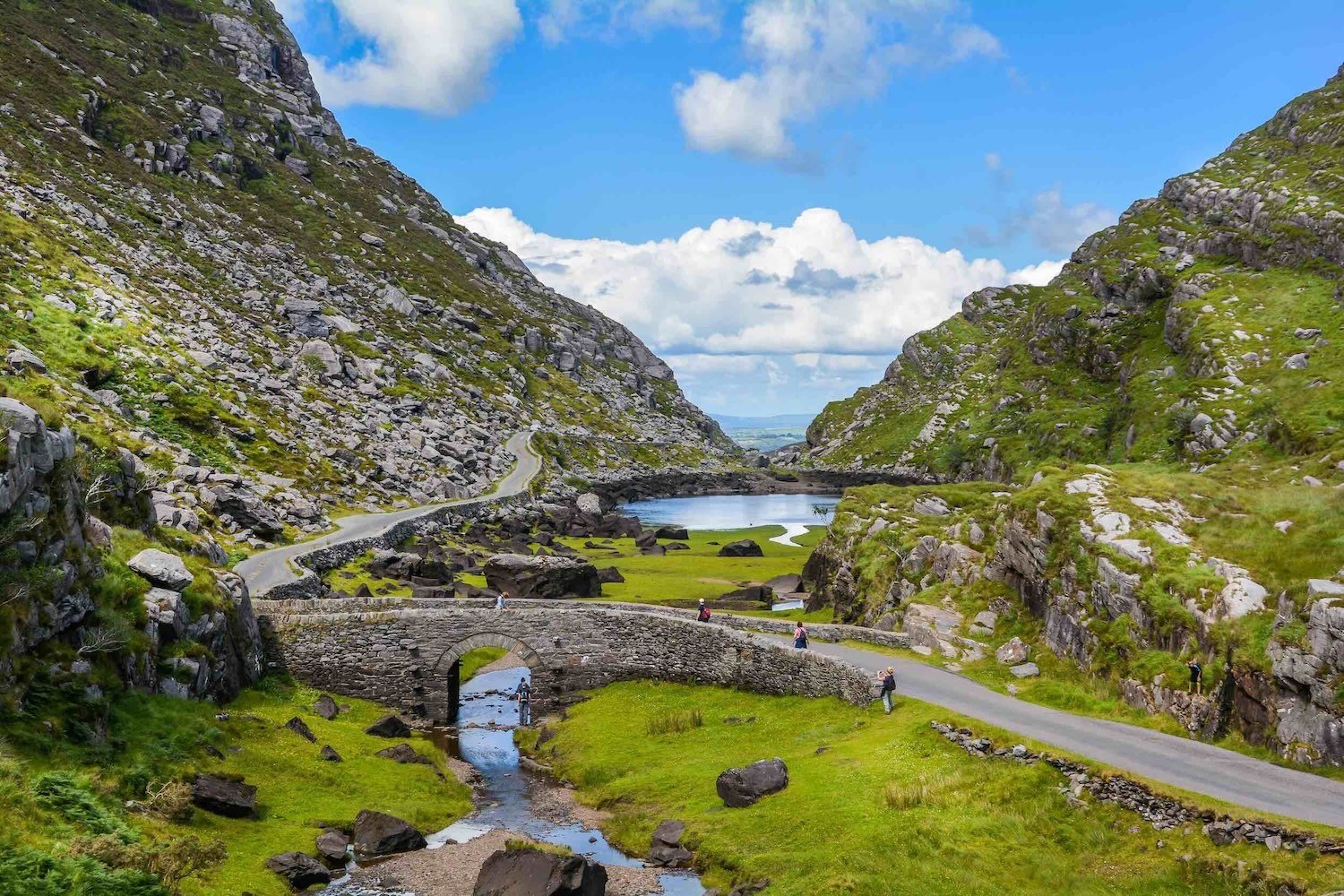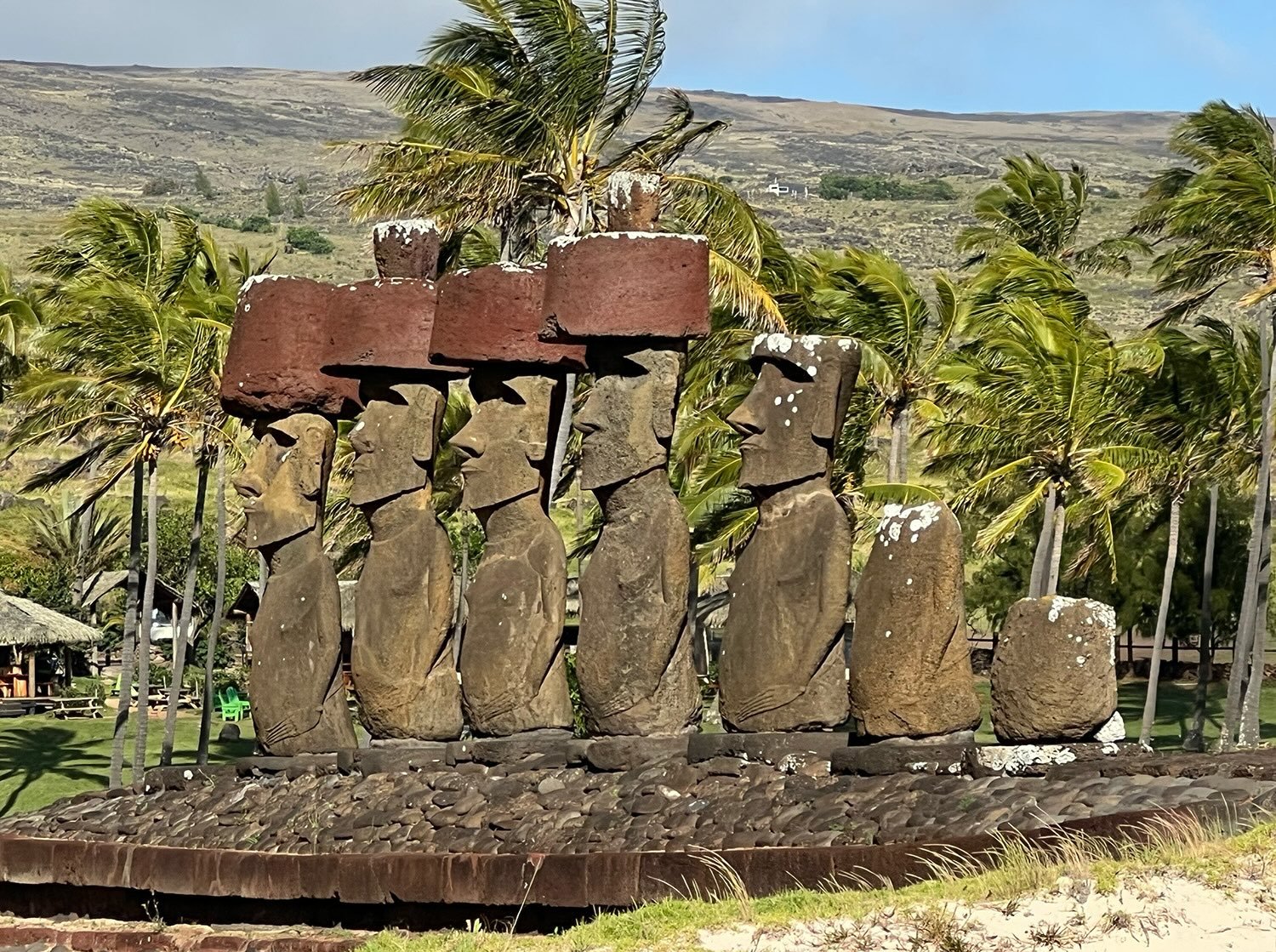Things To Know Before Visiting Hawaii – Essential Hawaii Travel Tips
I spent four months island hopping across five Hawaiian islands, at times “striking gold” while striking out in others. I hiked, snorkeled, road tripped, annoyed locals with endless questions, and God knows what else, in order to bring you these essential Hawaii travel tips. In this guide, we’ll cover all the things I wish I knew before visiting Hawaii so that your adventure in paradise can be as close as possible to perfect!
Visiting Hawaii? Sample itineraries, guides to the best spots, and the must-see highlights in five islands await you in the Hawaii Travel Guide collection. Aloha!
Which Islands to Visit in Hawaii?
We’ll this Hawaii travel tips guide with the “million-dollar question”. It’s especially puzzling when planning a first-time trip to Hawaii. There are six “main” islands in Hawaii that you can basically visit. It’s important to note that every island is unique, even if separated by just a few miles of ocean. The key ingredients to this distinction are the island’s level of development and topography.
Some geologically older islands, such as Kauai, are sculpted with eroded emerald peaks, while others are still “young” and dominated by massive shield volcanoes. Some islands have interstate highways and Wal-Marts, while others barely have mobile coverage. So, you get the point. I highly recommend checking out this guide covering The Best Islands in Hawaii before reading on.
Here are the best islands in Hawaii for (in order of preference):
- Authenticity & Vibe: Molokai, Big Island, Kauai, Maui, Oahu
- Hiking: Kauai, Big Island, Molokai, Oahu, Maui >> see The Best Hikes in Hawaii
- Beaches: Kauai, Big Island, Maui, Oahu, Molokai >> see The Best Beaches in Hawaii
- Road Trips: Big Island, Maui, Oahu, Kauai, Molokai >> see The Best Scenic Drives in Hawaii
- Beach Resorts: Maui, Big Island, Kauai, Oahu
- Families: Maui, Big Island, Kauai, Oahu, Molokai
- Diving and Snorkeling: Big Island, Maui, Kauai, Oahu, Molokai
Missing from these lists is Lanai, whose visitors often make the journey to specifically stay in its ultra-luxury resort. You can also visit Lanai on a day trip from Maui.
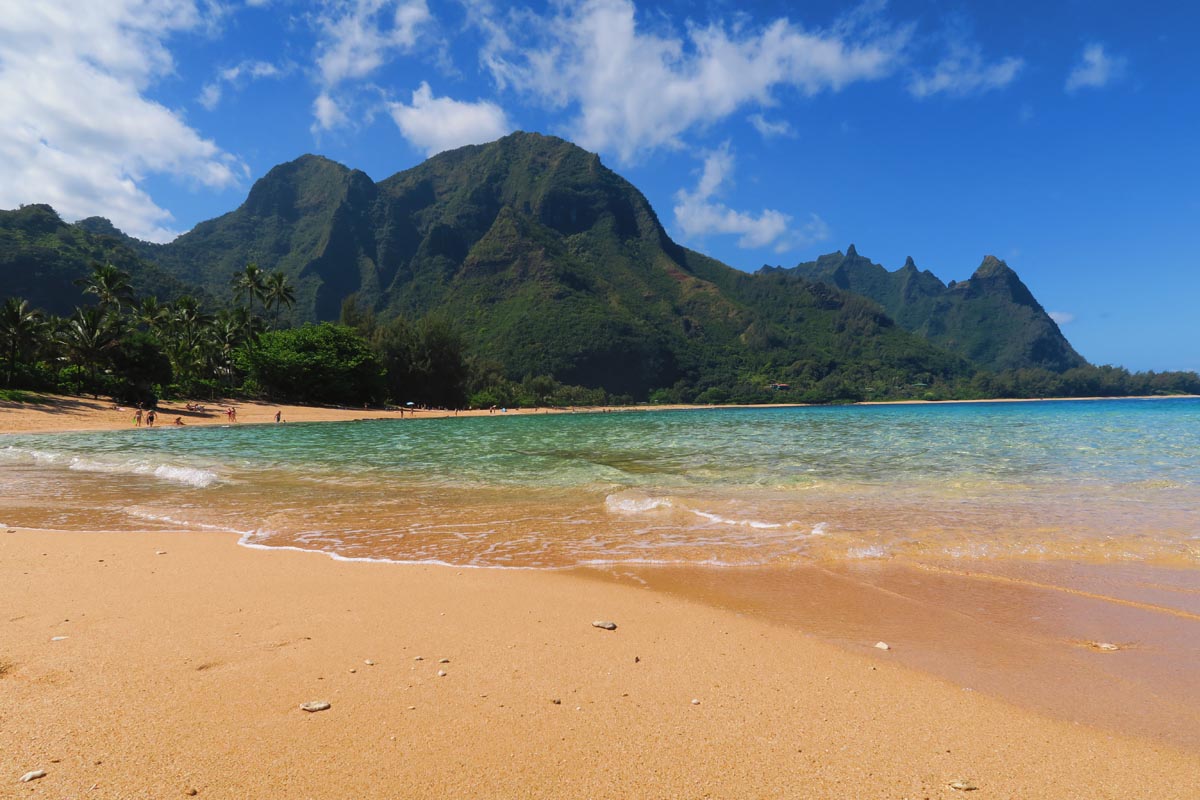
When is the Best Time to Visit Hawaii?
In a nutshell, the best time to visit Hawaii is during the drier shoulder seasons of May-June and September-October. Though Hawaii is a busy year-round destination, two factors are key: the weather and the peak tourist seasons.
Hawaii’s Weather
Not accounting for an island’s microclimates, Hawaii has only two seasons: a wet season and a dry season. In general, the wetter months are from November to March (“winter”), and the drier months are from June to September (“summer”). Since Hawaii is home to some of the wettest spots on the planet, expect rain even during the dry season, though some areas will be bone dry.
I recommend always checking the National Weather Service’s forecast, where you can drill down to your specific island and even to a particular region. However, unless forecasting a major storm affecting all the islands, take the weather forecast with a grain of salt. It can often be inaccurate, for better or worse.
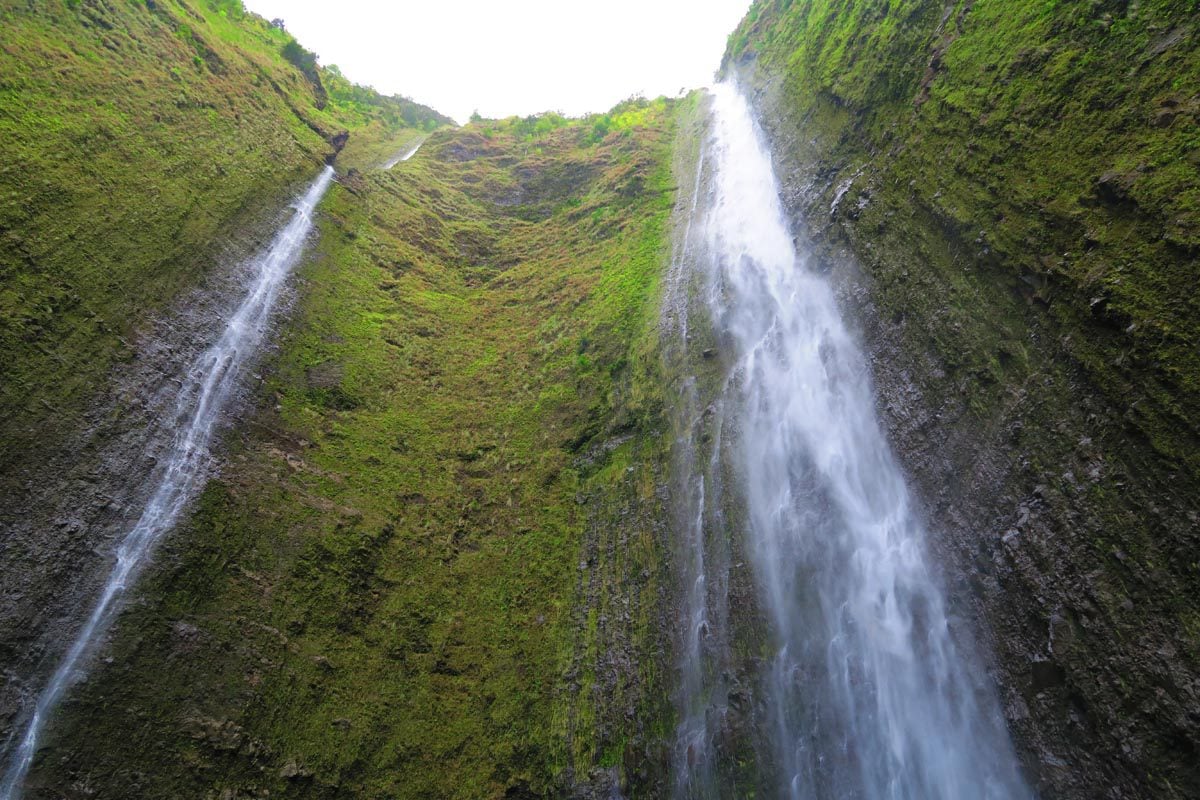
Peak Tourist Season
Just as important as the weather, Hawaii’s peak tourist season can make or break your vacation. Every year, millions of visitors head to Hawaii. On a given day, there are often 200-300 thousand tourists roaming around the islands. Since most visitors arrive from the “mainland”, the “worst time” to visit Hawaii is during U.S. school holiday seasons, particularly summer and Christmas breaks. During these peak periods, traffic can be particularly bad, accommodation prices ridiculously high, and beaches and hiking trails feel overcrowded. If you must visit during this time, consider heading to Molokai or to the Big Island.

Leeward vs. Windward
One of the most useful Hawaii travel tips I’ll share might affect your decision on where to stay on the island. The Hawaiian Islands are situated in the path of trade winds that blow from the northeast throughout the year (more so in the summer months). The part of the island which faces the trade wind is called “windward” and the opposite side is called “leeward”. Why is this important? The island’s windward side usually has the best surfing beaches, but also its wetter side.
Here’s what basically happens. The wind blows warm moisture from the ocean towards the islands, which then gets “trapped” by the mountains off the coast. Since the warm air cannot “travel” inland, it rises and condenses to form rain, which comes down on the windward side. This is the main reason why every island in Hawaii has a drier and wetter side. Unless there’s a huge storm, chances are that even if it’s pouring on the windward side, it’s sunny on the leeward coast. However, when the trade wind is not blowing, there’s a chance that southern Kona Winds will blow vog from the Big Island, causing health issues for some.
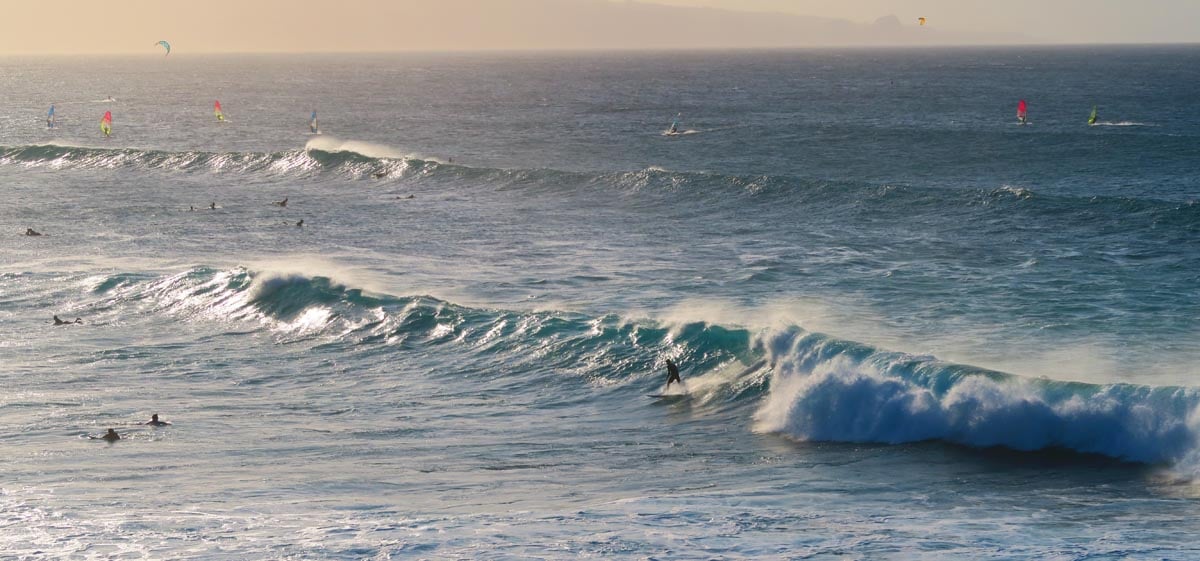
How Much Time to Spend in Hawaii?
I spent four months in Hawaii, volunteering on the Big Island and hopping across the others. To be realistic, you’ll likely spend much less time than I did. So, how long is the ideal vacation in Hawaii? This really depends on the purpose of your visit.
If it’s not your first time in Hawaii, or you just want to relax and unwind at the beach, a week should be adequate. If it’s heavy sightseeing that you’re after, ten days are optimal. This is especially true if you’re coming from overseas, seeing how Hawaii is expensive to get to, not to mention far. To really explore Hawaii, two weeks is an ideal timeframe.
Here’s my rule of thumb: For every week in Hawaii, explore a maximum of two islands.
Here are a few sample itineraries to help you out: 7 Days in Hawaii | 10 Days in Hawaii | 2 Weeks in Hawaii
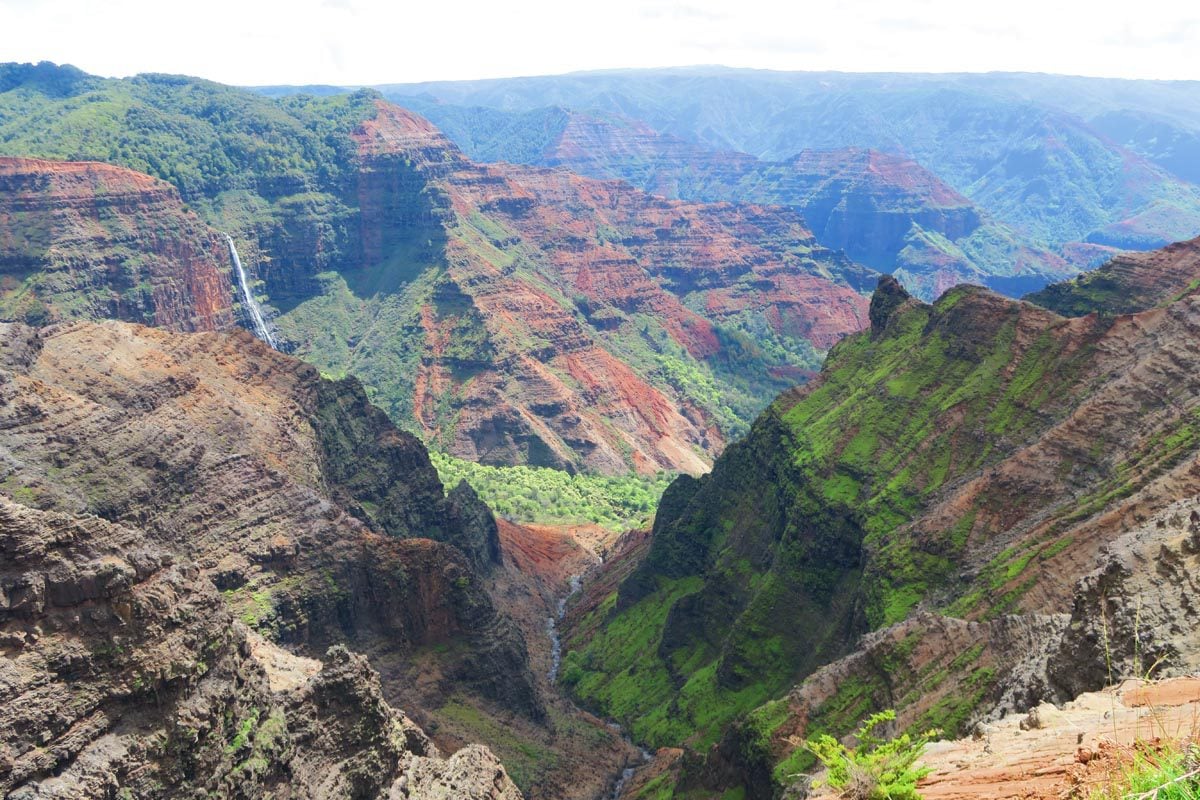
What to Pack for a Trip to Hawaii?
Apart from the usual holiday gear, here are a few items that are of particular use for a trip to Hawaii.

Here are a few packing items to consider: snorkeling gear (fins will come in handy), reef shoes, USB charger (for the car), light rain gear, sweat-repelling clothing, evening wear, beach sarong, sun protection, picnic gear, mosquito repellent, dry sacks and waterproof pouches (for hiking and boat tours), heavy winter gear if planning to visit Mauna Kea/Mauna Loa (Big Island) or sunrise/sunsets in Haleakala (Maui).
I also highly recommend grabbing a Lonely Planet guide to Hawaii to have useful information at your fingertips and to understand Hawaii’s culture and interesting history better. It always comes in handy both during the planning stages and during the trip.
Check out the X Days In Y Packing List for more ideas.
Is Hawaii Expensive?
The short answer: hell ya! The “paradise premium” is particularly high in Hawaii, even more so than in the authentic paradise of Tahiti … There are many reasons for Hawaii’s skyrocketing costs, and not all of them relate to the fact that goods must be shipped here from the mainland. I would say the biggest reason is that tourists are simply willing to pay this premium, and since there aren’t a whole lot of employment options aside from tourism, locals squeeze the most out of this.
That said, some islands are more expensive than others. This has to do with the island’s population size and development level. Of the islands I visited, Molokai was the most expensive, and Oahu was the cheapest. Here’s what you can expect to pay, keeping in mind that things always change. Keep reading this Hawaii travel tips guide for cost-saving advice.
Here’s what you can expect to pay, keeping in mind that things always change.
- One-way inter-island flight (not including luggage): $75-200
- Room in bed & breakfast / condo: $120-$250/night
- Private room in an Airbnb: $80+
- Dorm bed in backpacker hostel: $65/night
- 2WD car rental: $50-80/day
- 2-tank dive: $150-$220
- Luau show: $130-200
- Surfing lesson: $80-120
- Meal in restaurant: $20+ (not including tip)
- Fresh coconut: $5-12!!!
- Poke bowl: $10-20
- Shave ice: $8-10
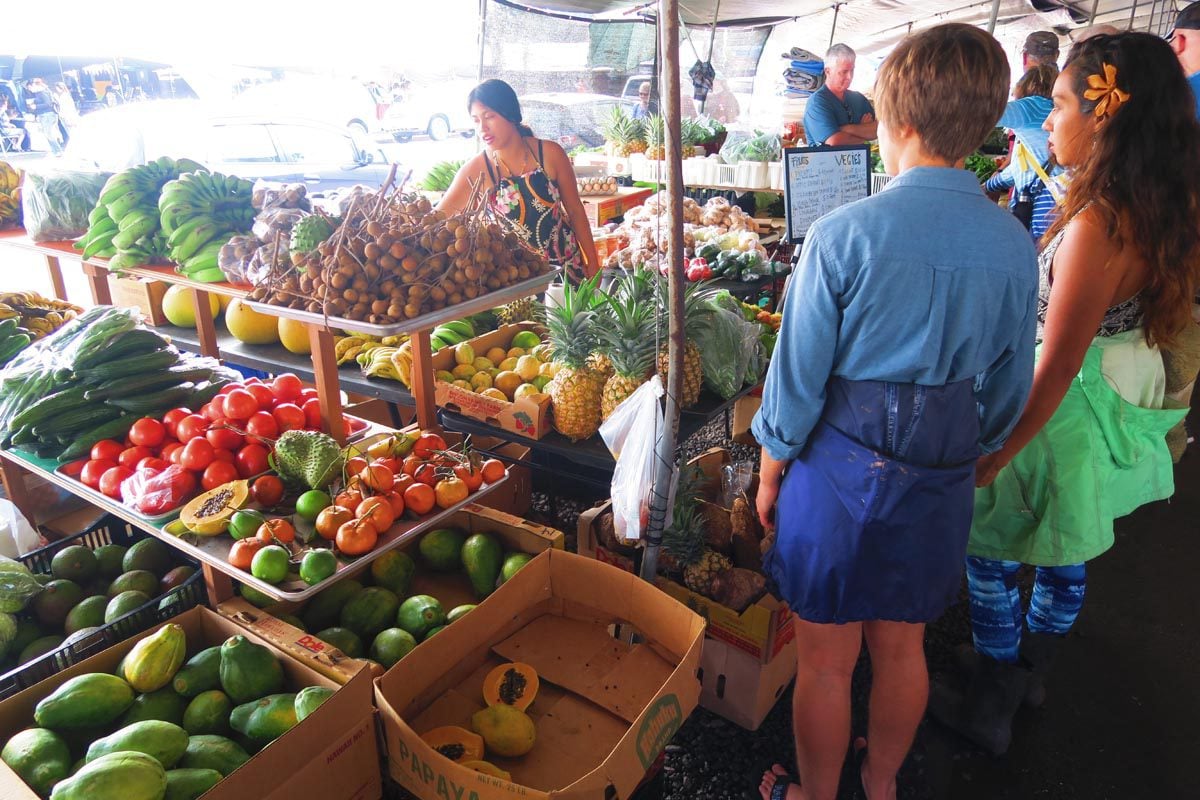
Are Tourists Welcomed In Hawaii?
Around 10 million tourists visit Hawaii every year. That’s a ratio of about seven tourists for each resident. Negative sentiments towards mass tourism in Hawaii have floated for several years, primarily stemming from the rising cost of living and lack of affordable housing for residents. The COVID pandemic has further intensified the talks around curbing tourism in Hawaii. Recently, Hawaii visitor numbers have slightly decreased, as some visitors are turned off by the thought of feeling unwelcome during their holiday. There’s not much you can do about this except respect the locals and do as much you can to ensure your tourist dollars stay in the pockets of local residents rather than large enterprises.
How to Travel Between Hawaii’s Islands
The only (reasonable) way of getting from one island to another in Hawaii is currently by plane. There was a ferry connecting Maui with Molokai and Lanai, but it is no longer in operation. So you’ll need to book domestic inter-island flights for your island hopping itinerary. Currently, Hawaiian Airlines is the outright market leader, followed by Southwest Airlines and Mokulele Airlines. You’ll need to purchase each individual leg separately as there is no “interisland air pass” at the present time.
Things can always change by the time you’re reading these lines; airlines come and go, and ferry lines open and shut.
-
- You don’t necessarily have to start your trip in Honolulu as you can directly fly to smaller islands from both the mainland and international destinations.
- When planning your itinerary, check which islands are directly connected by flights to avoid a connection in Honolulu. Currently, all islands apart from Lanai and Molokai are connected to each other by one or more domestic airlines.
- Some islands have more than one airport. Keep this in mind when booking your flight, hotel, and transfers or car hire.
- During peak tourist season and always before a departing international flight from Honolulu – leave plenty of time for car rental return and long queues at check-in/security.
- You can travel with any agricultural product between the islands but restrictions do apply on flights to the mainland.
- Review the “How to Save on Costs in Hawaii” section for flight-related tips.
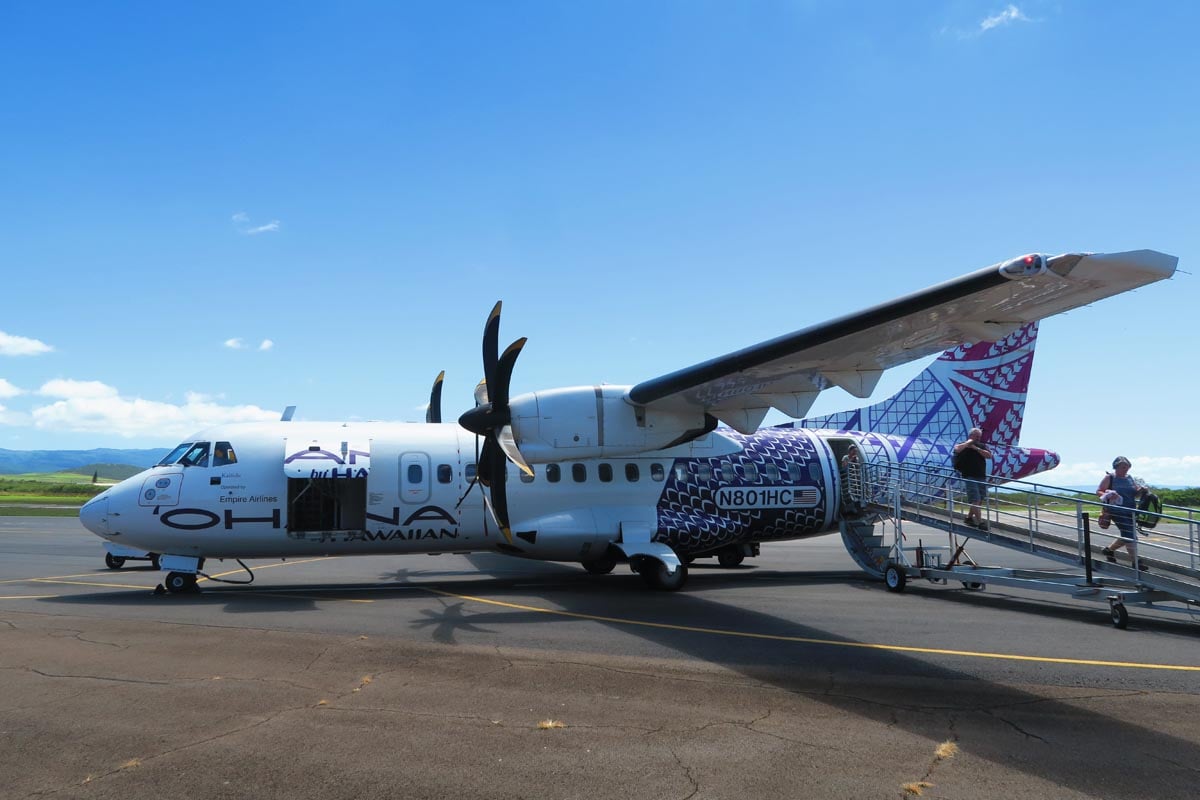
Where to Stay in Hawaii
As you might expect from a top U.S. tourist destination, there are plenty of accommodation types in Hawaii. However, supply doesn’t always match the demand, particularly in the budget categories. My advice is to book well in advance.
Resorts are popular on Maui, the Big Island, and Kauai. They’re big, usually by the beach, they might have a golf course, and they cater to couples and families alike, though some focus on adults. Your stay at a resort will usually include a resort fee and perhaps additional local taxes for resort stays.
Condos sometimes look like resorts but are often vacation rentals or fully-furnished apartments rented by owners or management companies. Condos offer a comfortable stay, sometimes even pampering, but the property usually lacks dining facilities and a vibe. It isn’t uncommon for your bill to include a hefty “cleaning fee” of upwards of $150 per stay or more.
Bed and breakfasts are my top choice. If chosen correctly, bed and breakfasts offer a laid-back, country-style stay with the opportunity to connect with the hosts and fellow like-minded guests. In recent years, it’s become tougher for bed & breakfasts to keep up with local regulations, pushing some owners to convert their business into a vacation rental.
There isn’t a large selection of hostels in Hawaii despite the destination’s appeal to some backpackers. The popular islands tend to have at least a couple of hostels. I strongly recommend doing your due diligence before booking to ensure the hostel aligns with the vibe you’re looking for (party vs. quiet). Hostels in Hawaii aren’t cheap, but your stay might include access to free trips around the island.
Every island in Hawaii has organized camping sites. However, all require the advanced purchase of a camping permit, and none allow you to use your car as a tent. Proper camping equipment and advanced reservations are needed.
If you’re looking to spend an extended period of time in Hawaii, look for volunteer opportunities on practically every island. Websites such as Workaway and WOOF have a list of hosts you can contact. I spent three months volunteering for 5 hours daily (weekends off) on the Big Island, where I helped my hosts run their coffee business and bed & breakfast.
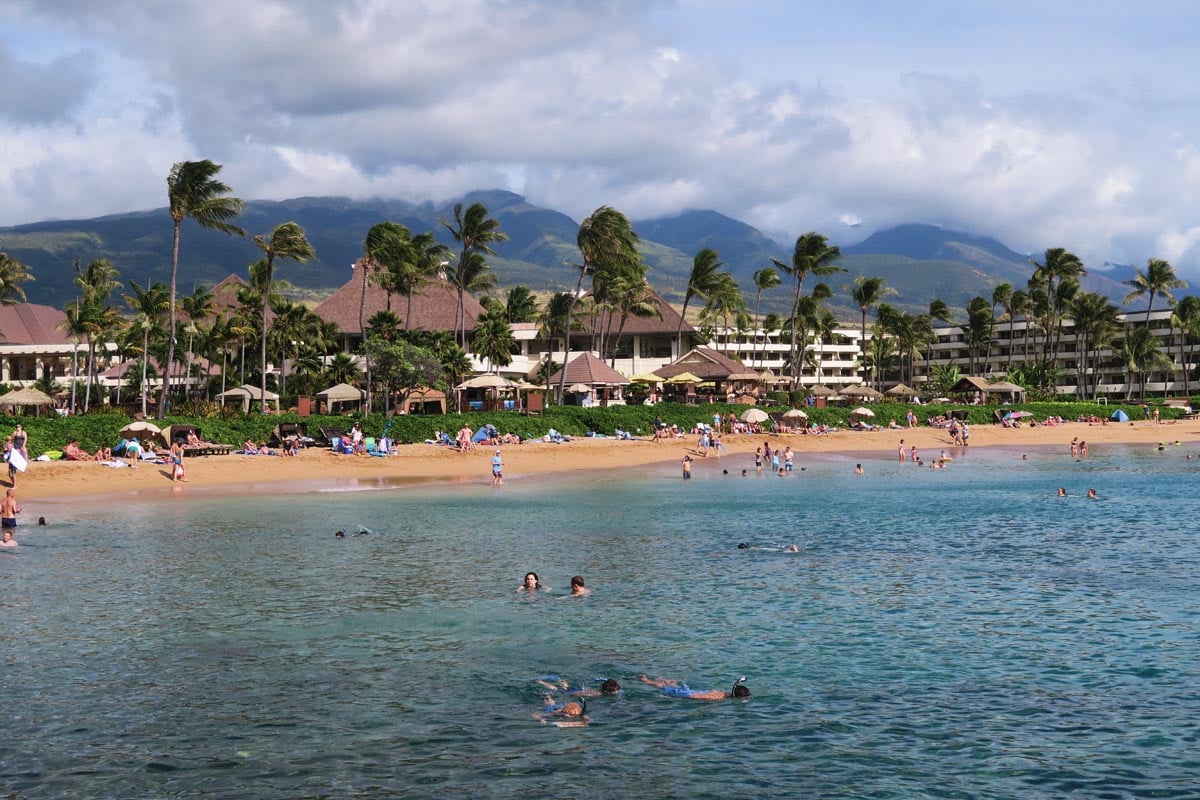
How to Get Around Hawaii’s Islands
With Oahu being the exception in some scenarios, one of the most useful Hawaii travel tips I can share is to rent a car from the moment you land on an island until the moment you leave. This is the best way to explore every island and, in some cases, the only practical way. Distances are often greater than you think, so having a car makes the difference. Expect to pay between $50-80/day for a 2WD rental, with discounts applied to weekly rentals. Apart from very particular spots in Molokai and the Big Island, there is really no need to rent a 4WD.
Here are several other options:
There is technically a public bus “system” on every island, but it is always geared for locals and not for tourists. However, if you simply need to get from point A to B, taking the bus could be an inexpensive option. Ohau is really the only exception, with a comprehensive bus network that even tourists can use to explore parts of the island. Look at the individual island guides for specific information about each island and download apps such as Moovit, which optimize your route.
Hitchhiking is very common and acceptable on all islands apart from Oahu. Besides using good judgment, the only thing to remember is to time your return so that you do not have to try and hitch a ride in the dark.
Cycling is very popular on some islands. Take extra caution on country roads that are prone to blind spots and careless drivers.
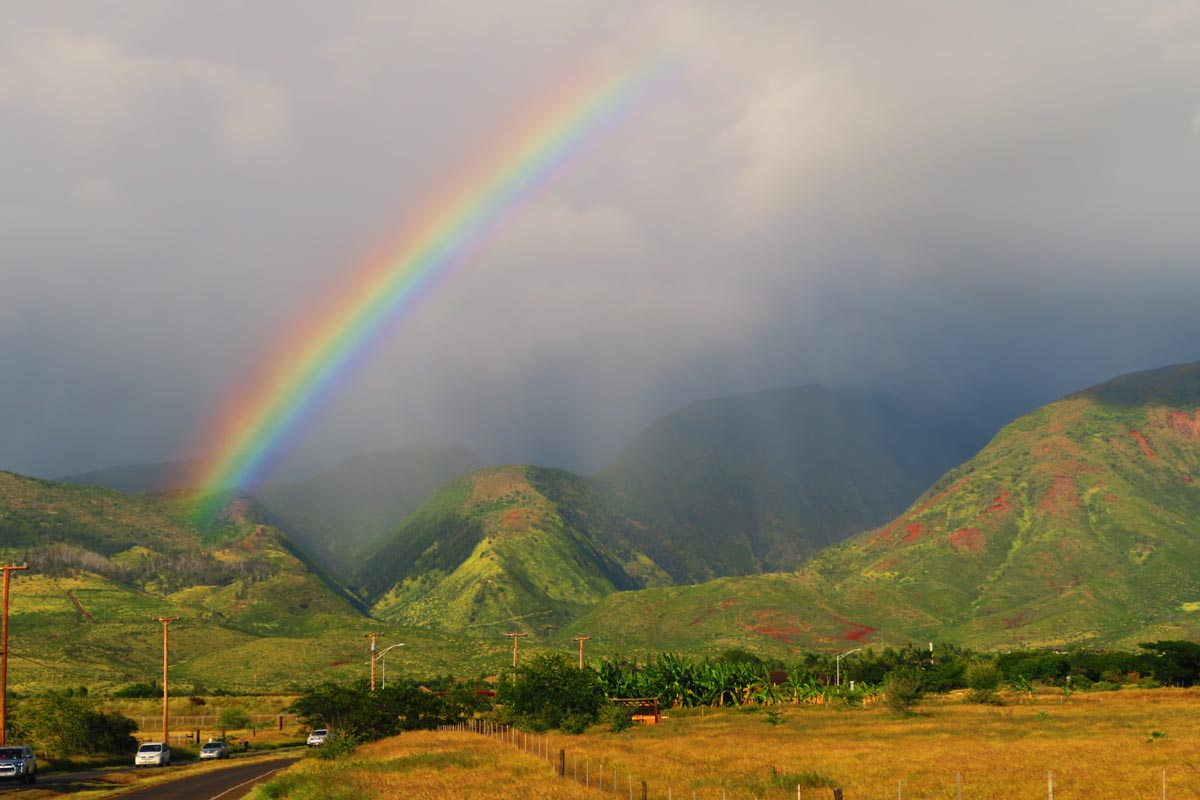
Hawaii Travel Tips: Driving
As you’ll likely rent a car to explore the islands, here are a few very important driving tips:
General Driving Safety
If you’re driving to remote sections of an island, fill up your gas tank even if it’s still pretty full. There might not be any gas stations when you need them. Use navigation apps such as Google Maps and Waze to optimize your journey. Download an offline Google Map of the islands you’re visiting in case of no connectivity. Remember to shift your car into low gear if driving down from high-elevation areas, and take extra care when driving at night.
Hawaii’s scenic roads and even just ordinary one-lane highways can pose many dangers. Adhere to signs warning of blind spots, keep a safe distance, yield to oncoming traffic in one-lane sections, respect the speed limit (especially on winding roads), and keep overtaking to a minimum. Some roads are listed as 4WD-only by local authorities, and some are voluntarily added to that list by car rental companies. Inquire at the time of rental and respect the rules to avoid car damage.
Car Rental
You’ll find the cheapest car rental rates in Oahu and Maui, while Molokai is the most expensive island for renting a car. I recommend booking well in advance to increase your chances of getting a good rate. In peak tourist season, some islands might run out of cars!
You’ll find the usual well-known car hire companies on most islands, but there are also local alternatives. If going that route, check where their location is, pick up/ drop off conditions and hours, insurance policy, and online feedback.
Insurance
Hawaii is a “no-fault” state when it comes to car insurance. This means that every party must fix their own car, regardless of who is at fault. When renting a vehicle, car hire companies will stress this fact and either scare you to death or force you to purchase an insurance package. If you’re an American car owner, check if your insurance policy covers rental cars. If you’re an international visitor, either insist on declining the extra insurance, purchase one (or all) extra insurance plans, or purchase extra insurance when renting from the likes of Rentalcars.com.
Car break-ins
Car break-ins are unfortunately common in Hawaii, particularly in Oahu and Maui. DO NOT leave anything valuable or visible in your car or trunk. To be on the safe side, leave the doors unlocked and even roll down one of the front windows. Avoid parking your car in isolated areas and look for broken glass on the ground – a sure sign of recent “activity”. This advice also holds for guided tours as thieves especially target those vehicles.
(1) Always check if the national, state, or local beach park require advanced reservations. (2) Several state parks charge non-Hawaii residents entry and/or parking fees.
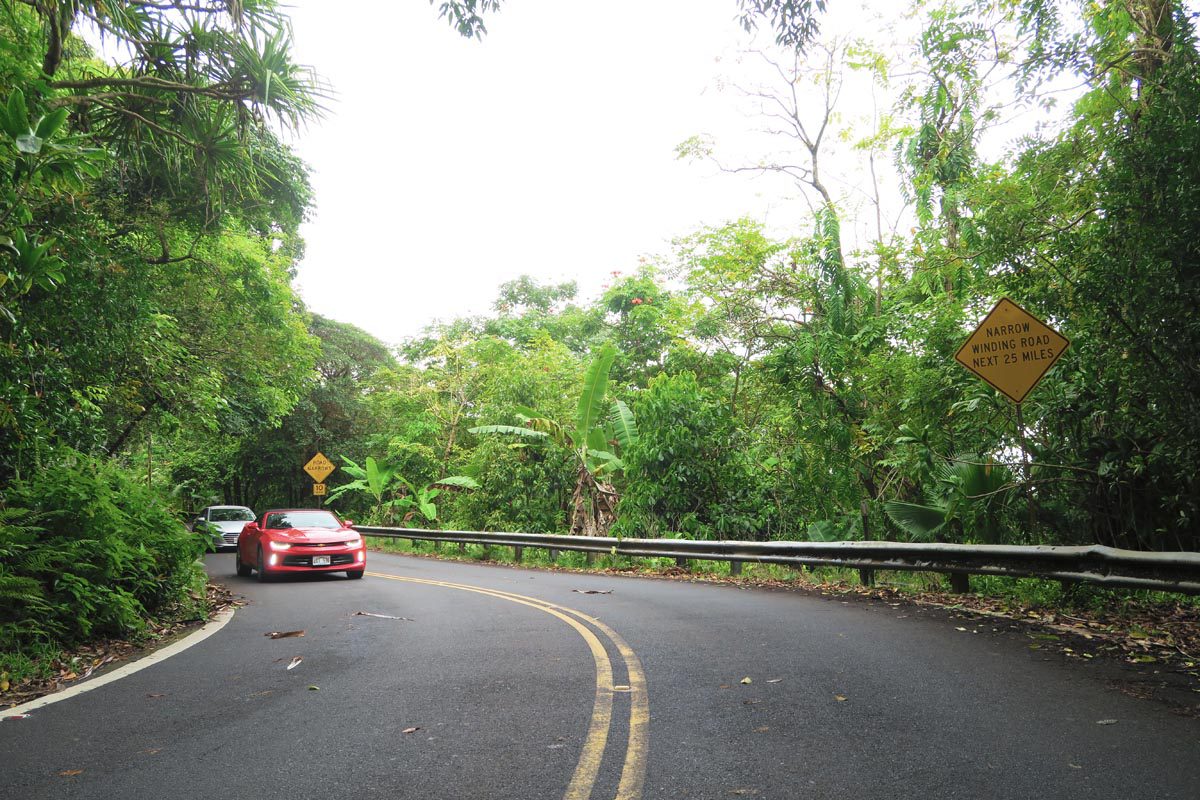
What’s Special On Each Island
Every island in Hawaii is different in terms of the vibe and scenery. Here’s what each island has to offer.
- Oahu: shopping, museums, culture, road trips, beaches, snorkeling, surfing, hiking, luaus >> See The Top 10 Things To Do In Oahu
- Maui: hiking, beaches, diving, snorkeling, surfing, road trips, waterfalls, luaus >> See The Top 10 Things To In Maui
- Molokai: hiking, remote beaches, going “off the grid”, meeting Hawaiians >> See The Top 10 Things To Do In Molokai
- Big Island: hiking, beaches, scenic drives, active volcano, diving, and snorkeling >> See The Top 10 Things To On The Big Island
- Kauai: hiking, beaches, surfing, nature, luaus >> See The Top 10 Things To Do In Kauai
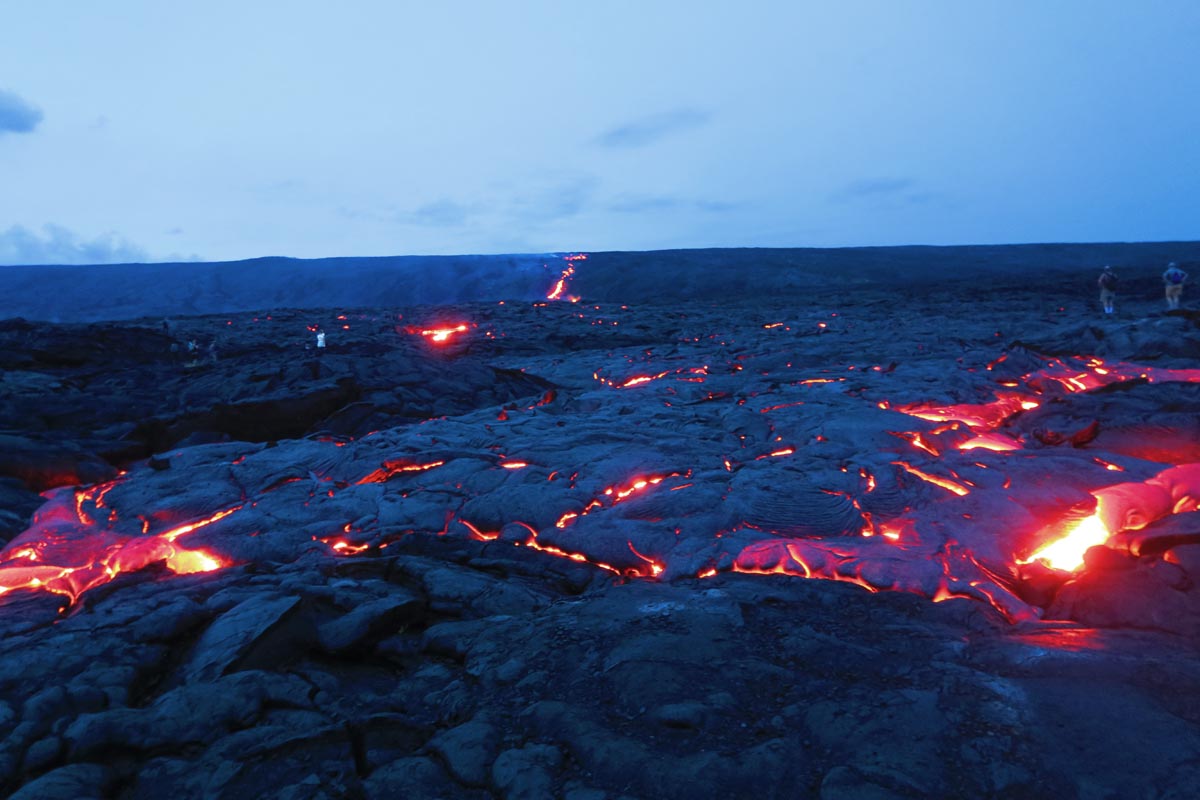
Guided Tours In Hawaii
Our coverage of essential Hawaii travel tips continues with a key topic. While guided tours don’t suit every traveler’s palate, they are sometimes necessary (for example, when a boat is required). Apart from Molokai, Hawaii’s major islands offer infinite ways to explore nature and get to know Polynesian culture.
Search for guided tours in small groups, and always read previous travelers’ feedback about the experience. It’s also extremely important to understand where the tour departs from and if there’s a minimum amount of guests required for the tour to depart. Lastly, if you have your heart set on a particular tour, book it for your first day on the island. That way, you can try again tomorrow in case of bad weather. You’ll have the following days to join the tour if it gets canceled due to poor weather or a lack of customers.
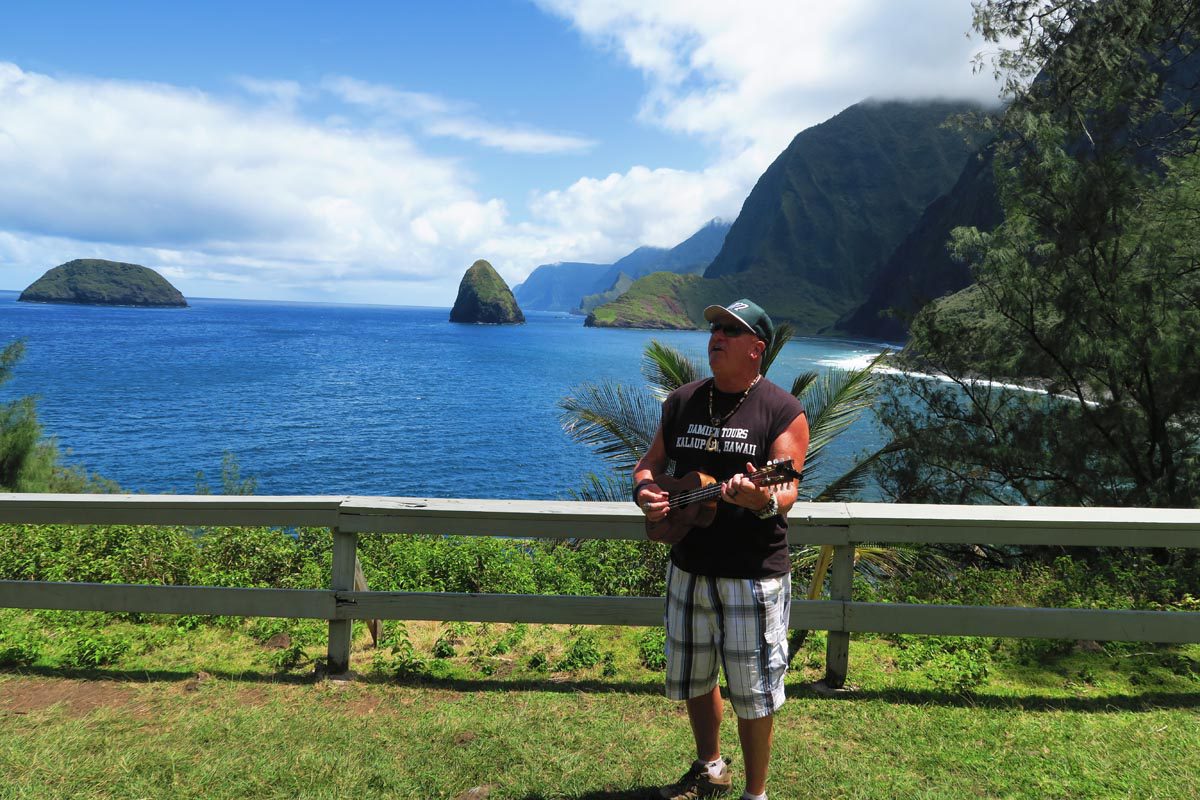
How to Save on Costs in Hawaii
As we covered earlier, Hawaii is a very expensive destination. Here are a few Hawaii travel tips for saving money:
- Baggage fees: if you’re using Hawaiian Airlines to island hop in Hawaii, check for discounts on checked luggage for frequent flyer program members.
- Food & groceries: avoid “heavy shopping” in farmers’ markets as they are usually quite expensive. Large supermarket chains (Foodland, Safeway) have excellent ready-to-eat food sections. Join their club and save on every purchase.
- Poke bowls: by far my favorite meal in Hawaii. Surprisingly, the best-tasting and best-value poke bowls are often in supermarkets. Choose from a huge selection of fresh poke and make it a bowl by adding rice and a side salad.
- Car rental: book in advance and inquire with local family-owned companies.
- Accommodations: book well in advance and always read the fine print regarding possible cleaning and resort fees.
- Tours: compare prices, avoid altogether, and look for coupons in brochures and tourist maps.
- Luau shows: ask a few locals where the best Luau show is; check if you can skip the dinner portion and just buy a ticket to the show.
- Souvenirs: if you’re looking for “tacky” souvenirs, visit the likes of Walmart, which tend to have the exact same merchandise as souvenir shops for slightly less.
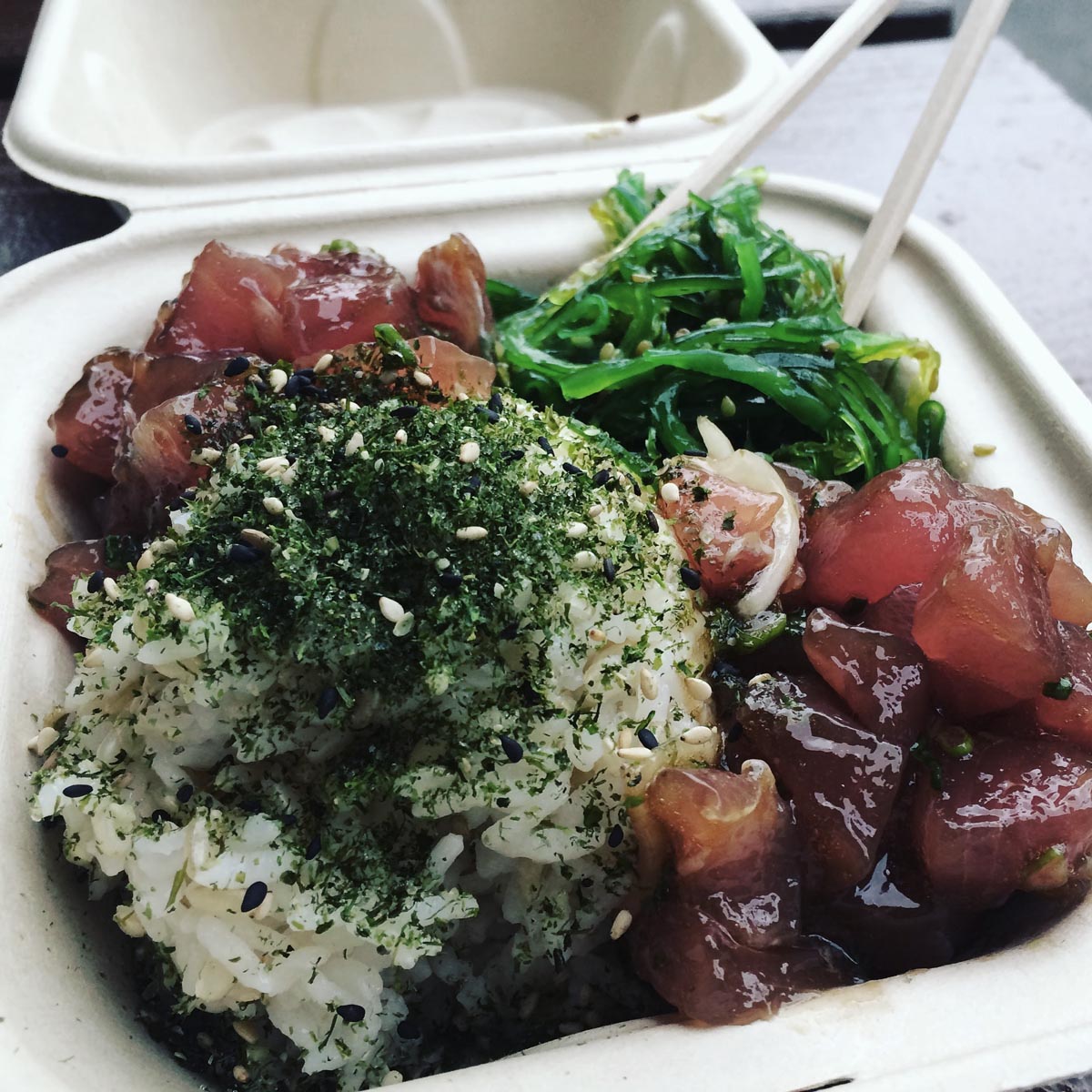
What to Buy in Hawaii?
To be fairly honest, Hawaii is pretty weak when it comes to authentic souvenirs, and, like everything else in the State – they’re very expensive. My only recommendations are macadamia nuts, Kona coffee, ukuleles, and wood carvings (but only if they’re made in Hawaii). When it comes to anything “artsy”, check if it was made in Hawaii and by which artists.
Regarding food, keep in mind that restrictions do apply when flying back to the mainland, and you will have to go through an agricultural inspection.

Hawaii Travel Tips: Staying Safe
We’ll wrap up this Hawaii travel tips guide with some essential safety tips.
- High surf: more so on windward coasts and especially during the winter months, Hawaii’s beaches are prone to high surf. This means very high waves and deadly swimming conditions. Exercise caution, use your judgment, and avoid swimming where there’s no lifeguard.
- Shark attacks: rare but do happen almost every year in very particular stretches of coastline. It’s always best to swim where there’s a lifeguard and to ask around.
- Tsunamis: these are very (very) rare, so don’t stress out. You might see evacuation signs and hear the testing of emergency sirens.
- Honolulu: Really, it is the only urban area to be careful in, especially at night, but even during the day in some sections. Ask your hosts where the “no go” zones are, keep your valuables safe, and don’t leave anything unguarded at Waikiki Beach.
- Contaminated water: tap water is safe to drink but always double-check with your hosts in “rural areas” if their water is supplied by the county (OK to drink) or not (questionable). Never drink water from streams without first purifying, and avoid swimming in enclosed natural pools as those are often contaminated by bacteria (seriously).
- Take the usual precautions when exposed to sunlight, but be aware that high-elevation areas in Hawaii see extremely cold conditions, even snow. If visiting Mauna Kea/Mauna Loa (Big Island) or Haleakala (Maui), bring with you full winter battle gear (long pants/sleeves, extra layers, heavy jacket, hat, gloves, scarf…).
- Vog: The volcanic smog caused by the Kilauea Volcano can cause respiratory problems for some and may be carried by “Kona Winds” to neighboring islands. If you are susceptible to such conditions, check the air quality report on a daily basis.
- Lava: In recent years, lava eruptions from Kilauea led to the evacuation of communities and the closure of a number of tourist sites. It’s best to check the Hawaii Volcanos National Park’s website for up-to-date info.
- Opening hours: to avoid getting stuck with your car in the parking lot, take note of opening hours in official beach parks, as gates are often closed a short time after sunset.
- See the “Hawaii Driving Tips” section for life-saving advice.
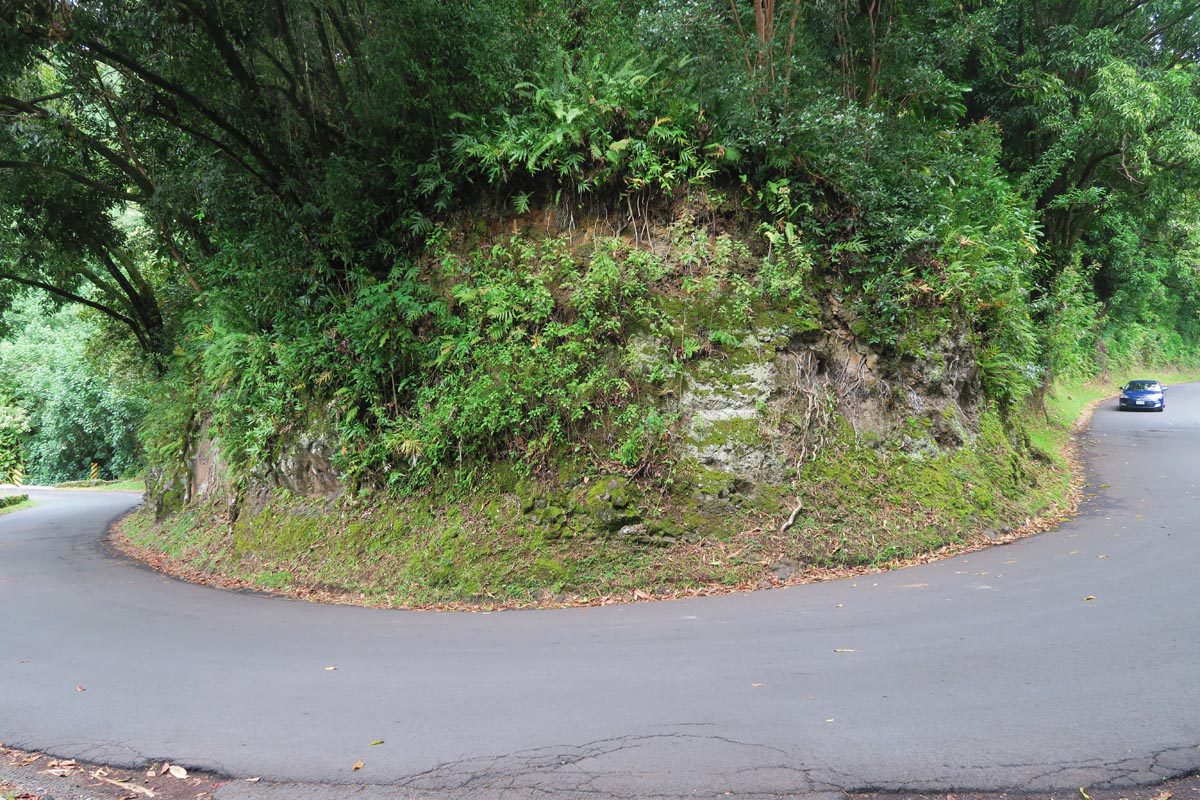
More from Hawaii
Equipped with essential Hawaii travel tips, you’re now ready to outsmart other travelers and start planning your trip. Sample itineraries, guides to the best spots, and the must-see highlights in five islands await you in the Hawaii Travel Guide collection. Aloha!
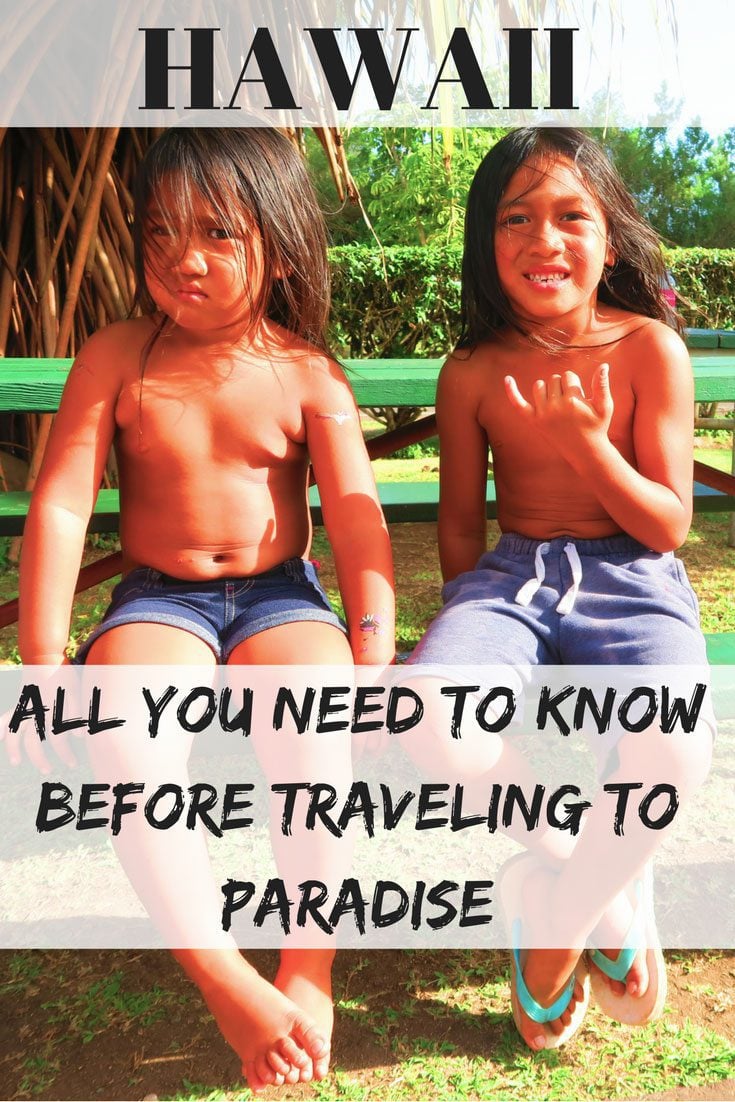
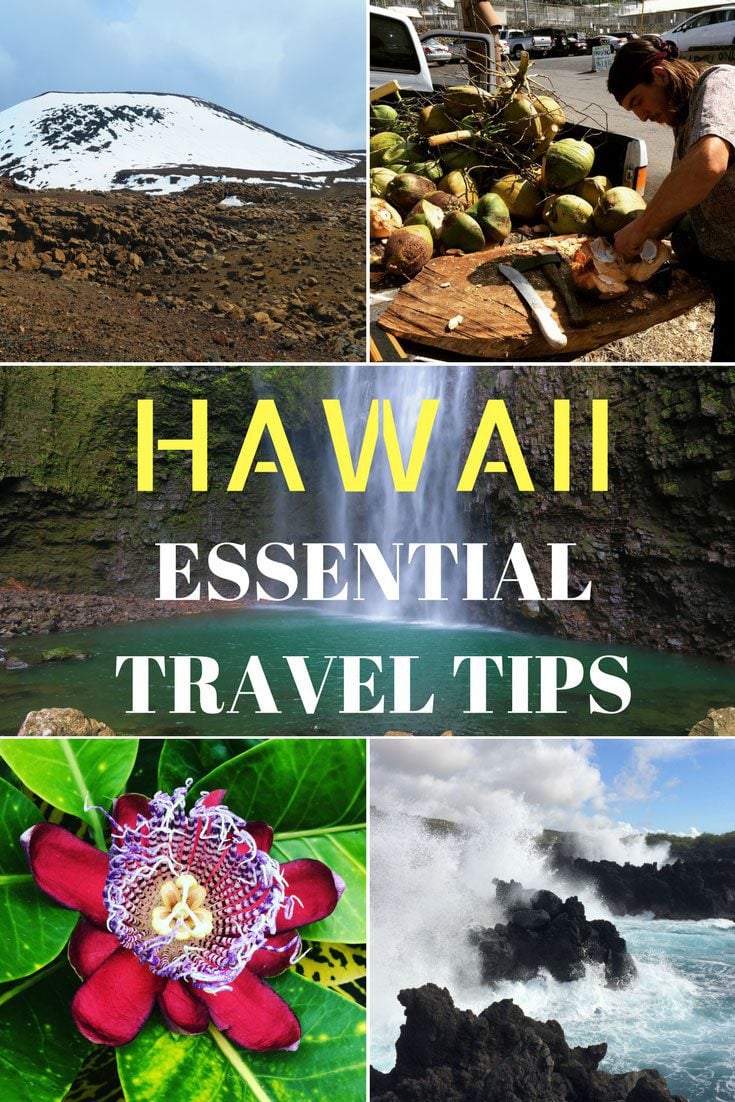
Pin These Images To Your Favorite Boards!
